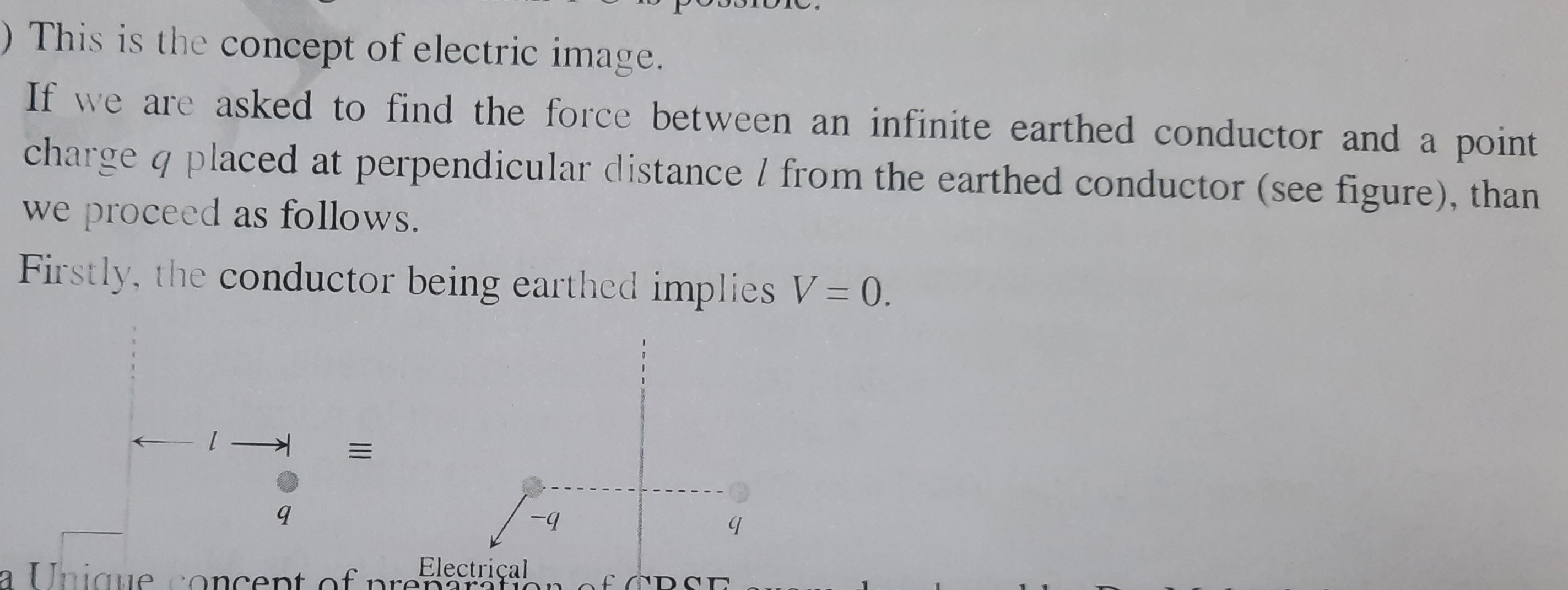My book says the electric field due to a positive point charge at a certain distance from the surface of flat, infinite earthed conductor can be obtained by introducing a virtual negative mirror charge of same magnitude and distance on the other side of the surface. How is this possible and what is the reason and logic behind it?
-
$\begingroup$ Who wrote your book and what is the title? $\endgroup$– my2ctsCommented Apr 28 at 16:18
-
$\begingroup$ See physics.stackexchange.com/q/74745 $\endgroup$– my2ctsCommented Apr 28 at 16:20
-
1$\begingroup$ I think that the wording of the question needs improvement. But, in essence, the question doesn't seem to be a homework, but aims at the principle of why the image charge method gives a correct answer for the electric potential and field. $\endgroup$– freecharlyCommented Apr 28 at 17:27
-
$\begingroup$ Griffiths "introduction to electrodynamics" gives a really good description of the logic behind image charges. $\endgroup$– AXensenCommented Apr 28 at 21:49
1 Answer
In principle, you have to find the solution of the Laplace equation in the half-space of the point charge which fulfills the boundary condition for the potential zero on the grounded plane. The image method makes this easy in this case. The Coulomb potential of the point charge is a solution of the Laplace equation everywhere in infinite space (except at the point charge location). In particular, also at the $V=0$ plane, where however, it doesn't fulfill the boundary $V=0$ condition. The Laplace equation is linear, and if you find a combination of solutions that fulfills the boundary condition, you have found a solution of the boundary value problem, which has been proven mathematically to be unique.
The trick here is that you introduce a virtual, oppositely charged point charge at a mirrored distance on the other side of the surface, which also gives a Coulomb potential solution of the Laplace equation, but of opposite sign. Then the potentials of the original and the mirror charge add to zero at the surface, so that the boundary condition $V=0$ is fulfilled there. Thus you have found a solution of the boundary value problem by just adding the real and the virtual point charge Coulomb potentials. You have to be aware though, that this potential solution is only valid in the half-space of the original point charge including the plane surface.
Note: It should be clear that, once you have the potential solution, you obtain the electric field as a gradient of the potential.
-
2$\begingroup$ An important point worth stressing: The uniqueness theorem. No matter how you found your solution, if it satisfies Laplace's equation and the well-defined boundary conditions, it is the solution. $\endgroup$ Commented Apr 28 at 21:48
-
$\begingroup$ @Vincent Thacker You are right, for the existence and unique solution of the Laplace/Poisson equation with Dirichlet boundary conditions. Physicist often assume that the unique solution exists. The proof for the much used Navier-Stokes equations is still outstanding! $\endgroup$ Commented Apr 28 at 22:11
-
$\begingroup$ @Vincent Thacker Following you suggestion, I have added a subordinate clause pointing out the uniqueness of the solution. $\endgroup$ Commented Apr 28 at 22:21

